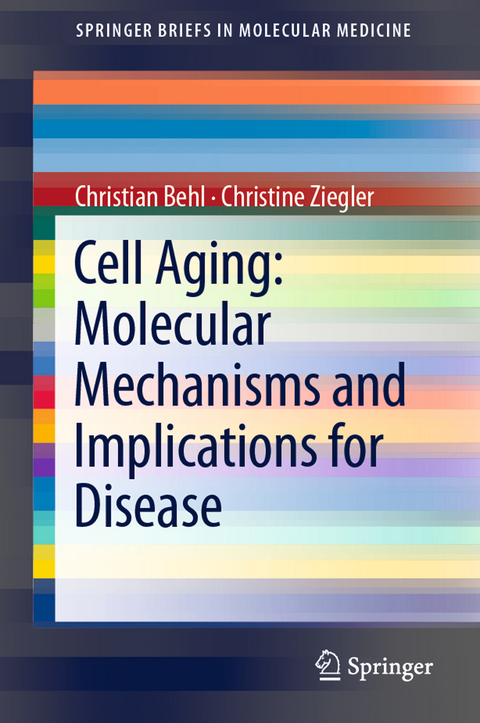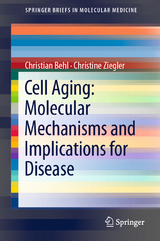Cell Aging: Molecular Mechanisms and Implications for Disease
Seiten
2014
|
2014
Springer Berlin (Verlag)
978-3-642-45178-2 (ISBN)
Springer Berlin (Verlag)
978-3-642-45178-2 (ISBN)
Aging represents a physiological and per se non-pathological and multifactorial process involving a set of key genes and mechanisms being triggered by different endogenous and exogenous factors. Since aging is a major risk factor in connection with a variety of human disorders, it is increasingly becoming a central topic in biochemical and medical research. The plethora of theories on aging some of which have been discussed for decades are neither isolated nor contradictory but instead can be connected in a network of pathways and processes at the cellular and molecular levels. This book summarizes the most prominent and important approaches, focusing on telomeres, DNA damage and oxidative stress as well as on the possible role of nutrition, the interplay between genes and environment (epigenetics) and intracellular protein homeostasis and introduces some genes that have actually extended life spans in animal models. Linking these different determinants of aging with disease, this volume aims to reveal their multiple interdependencies. We see that there is no single perfect theory of aging and that instead it is possible to define what the authors call the molecular aging matrix of the cell. A better knowledge of its key mechanisms and the mutual connections between its components will lead to a better understanding of age-associated disorders such as Alzheimer s disease.
Dr. des. Christine Ziegler, Studienrätin am Domgymnasium Fulda
Aging and cell aging: an introduction.- Cell cycle: the life cycle of a cell.- Theories and mechanisms of aging.- Selected age-related disorders.
From the reviews:
"It is appropriate for graduate students of the biomedical sciences, as well as scientists new to the field of aging. ... This is a good introduction to the field of cell aging. ... This book provides a thorough, yet brief, review of cell aging through discussions of various mechanisms of aging and age-related diseases and would be useful for a graduate student symposium or newcomers to the field of cell aging." (Ellen Mary Andrews, Doody's Book Reviews, April, 2014)
| Erscheint lt. Verlag | 7.1.2014 |
|---|---|
| Reihe/Serie | SpringerBriefs in Molecular Medicine |
| Zusatzinfo | IX, 108 p. 34 illus., 32 illus. in color. |
| Verlagsort | Berlin |
| Sprache | englisch |
| Maße | 155 x 235 mm |
| Gewicht | 195 g |
| Themenwelt | Studium ► 2. Studienabschnitt (Klinik) ► Pathologie |
| Naturwissenschaften ► Biologie ► Zellbiologie | |
| Schlagworte | Age related disorders • Age-related disorders • Aging biochemistry • Apoptosis • Cell aging • cell cycle • Cellular senescence • epigenetics • Life span extension • Molecular aging matrix • Molecular mechanisms of aging • Nature and nurture • Neurodegeration • protein homeostasis • signaling pathways • Theories of aging |
| ISBN-10 | 3-642-45178-0 / 3642451780 |
| ISBN-13 | 978-3-642-45178-2 / 9783642451782 |
| Zustand | Neuware |
| Haben Sie eine Frage zum Produkt? |
Mehr entdecken
aus dem Bereich
aus dem Bereich
Klinisch-pathologische Übersichtskarten
Buch | Hardcover (2023)
Springer (Verlag)
CHF 48,95




